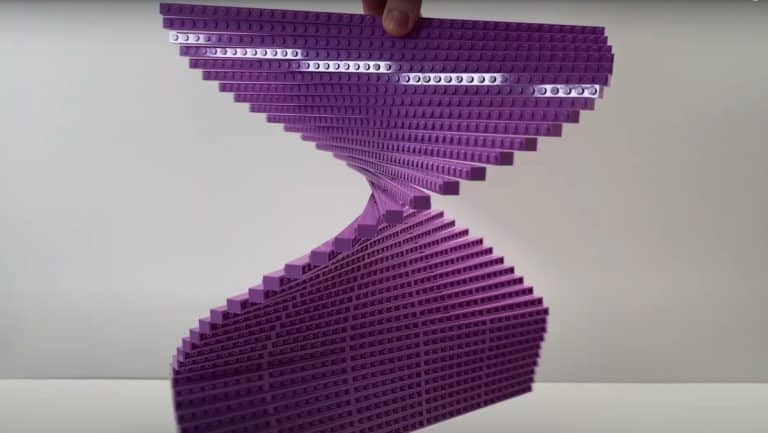When we hear the name Leonardo da Vinci, most of us immediately think of Mona Lisa’s mysterious smile. But Leonardo was far more than just a painter. He was an engineer, architect, inventor, anatomist, and a true Renaissance polymath. In the late 15th and early 16th centuries, he sketched out ideas for everything from helicopters to tanks, from automated bobbin winders to the hauntingly beautiful viola organista.
And yet, one of his most captivating creations is something deceptively simple: a bridge. Not just any bridge, though—a self-supporting bridge that requires no nails, ropes, screws, glue, or even joints. Just pure physics. Just friction and gravity.
This video of a father and son building this bridge with nothing more than a few wooden sticks. No fasteners. No tools. Just careful placement and balance. And what stands at the end is what Leonardo once called the “Bridge of Safety.”
According to architectural blogs that explore self-supporting structures, the entire system truly does rest on two invisible forces: friction and gravity. Notches between pieces help, sure, but they aren’t strictly necessary. If the sticks grip each other tightly enough, gravity does the rest.
Leonardo experimented with this structure in both bridge and dome form. These designs were commissioned by the powerful Borgia family, who needed fast, lightweight, and durable constructions—easily assembled and disassembled during their constant power struggles with the rival Medici family in Renaissance Italy. It’s unclear whether this particular bridge was ever used in battle, but given its modularity and portability, it’s easy to imagine it being a military favorite among 16th-century warlords looking for an edge.
And this wasn’t his only bridge. For Duke Sforza, Leonardo designed a rotating bridge that could be deployed across rivers and moats in a matter of minutes. Using a rope-and-pulley system, it swung into place and allowed entire armies to cross with ease. Like a portable piece of battlefield engineering straight out of a sci-fi novel—except it was 500 years ago.
Today, these designs are more than just historical curiosities. They’re sources of inspiration. In fact, Google Arts & Culture recently launched a fascinating project called “Leonardo: Inside a Genius Mind,” where machine learning algorithms dive deep into Leonardo’s original notebooks—his codices—to better understand how he thought. If you’ve ever wished you could peek inside the mind of a true genius, this digital experiment is about as close as it gets.
And if you’re itching to dive even deeper into Leonardo’s world—not just the art, but the sketches, the science, the madness behind the brilliance—Frank Zöllner’s Leonardo, published by Taschen, is an absolute gem. Rich in visuals and insights, it’s one of those books you don’t just read—you explore. Highly recommended for anyone wanting to keep a piece of the Renaissance on their shelf.
Maybe the real genius of Leonardo wasn’t just in creating the impossible, but in making the simple unforgettable. Even now, centuries later, a few sticks of wood and a handful of physical laws still carry his legacy—elegant, clever, and timeless.






